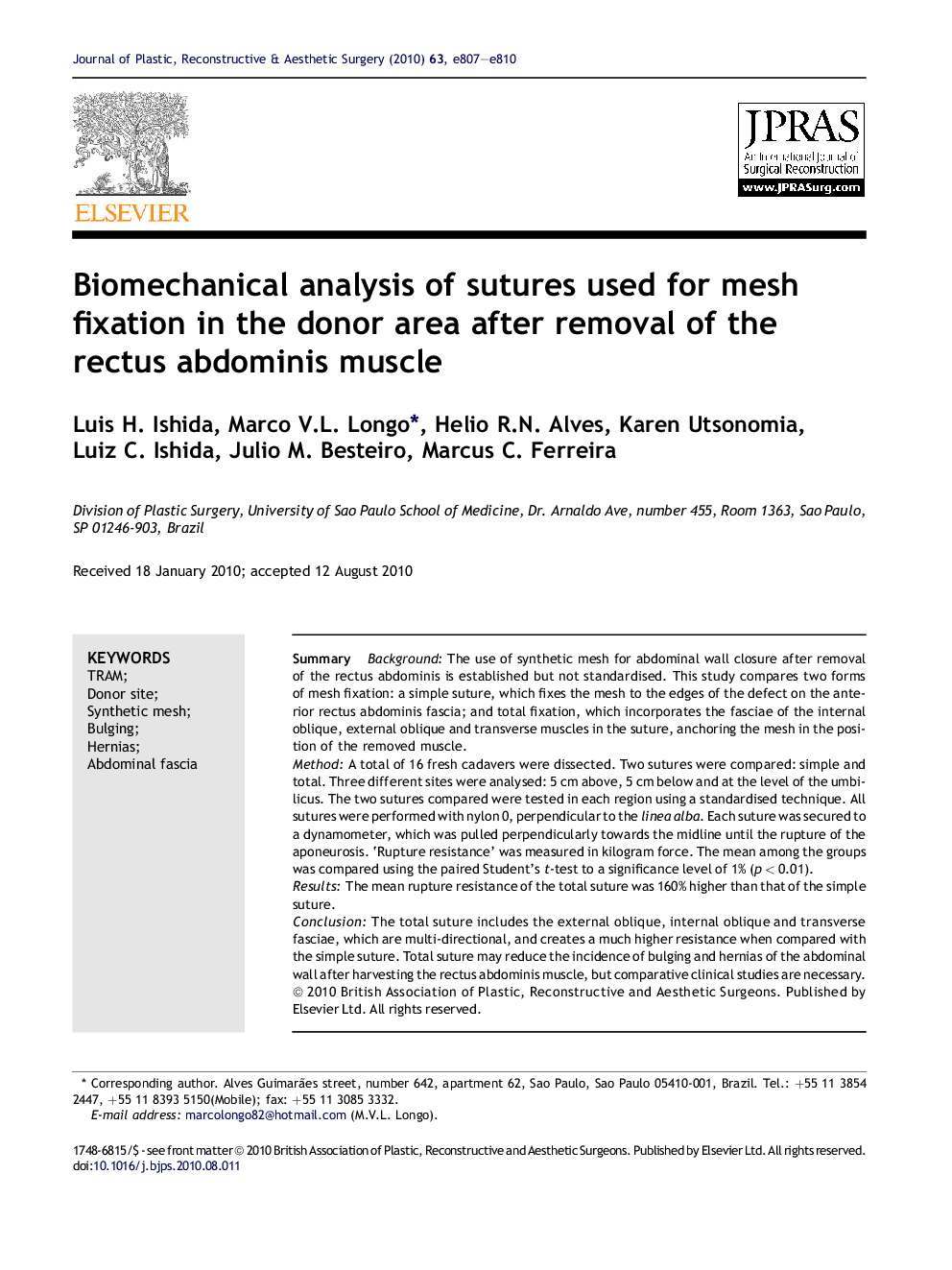| Article ID | Journal | Published Year | Pages | File Type |
|---|---|---|---|---|
| 4119388 | Journal of Plastic, Reconstructive & Aesthetic Surgery | 2010 | 4 Pages |
SummaryBackgroundThe use of synthetic mesh for abdominal wall closure after removal of the rectus abdominis is established but not standardised. This study compares two forms of mesh fixation: a simple suture, which fixes the mesh to the edges of the defect on the anterior rectus abdominis fascia; and total fixation, which incorporates the fasciae of the internal oblique, external oblique and transverse muscles in the suture, anchoring the mesh in the position of the removed muscle.MethodA total of 16 fresh cadavers were dissected. Two sutures were compared: simple and total. Three different sites were analysed: 5 cm above, 5 cm below and at the level of the umbilicus. The two sutures compared were tested in each region using a standardised technique. All sutures were performed with nylon 0, perpendicular to the linea alba. Each suture was secured to a dynamometer, which was pulled perpendicularly towards the midline until the rupture of the aponeurosis. ‘Rupture resistance’ was measured in kilogram force. The mean among the groups was compared using the paired Student’s t-test to a significance level of 1% (p < 0.01).ResultsThe mean rupture resistance of the total suture was 160% higher than that of the simple suture.ConclusionThe total suture includes the external oblique, internal oblique and transverse fasciae, which are multi-directional, and creates a much higher resistance when compared with the simple suture. Total suture may reduce the incidence of bulging and hernias of the abdominal wall after harvesting the rectus abdominis muscle, but comparative clinical studies are necessary.
